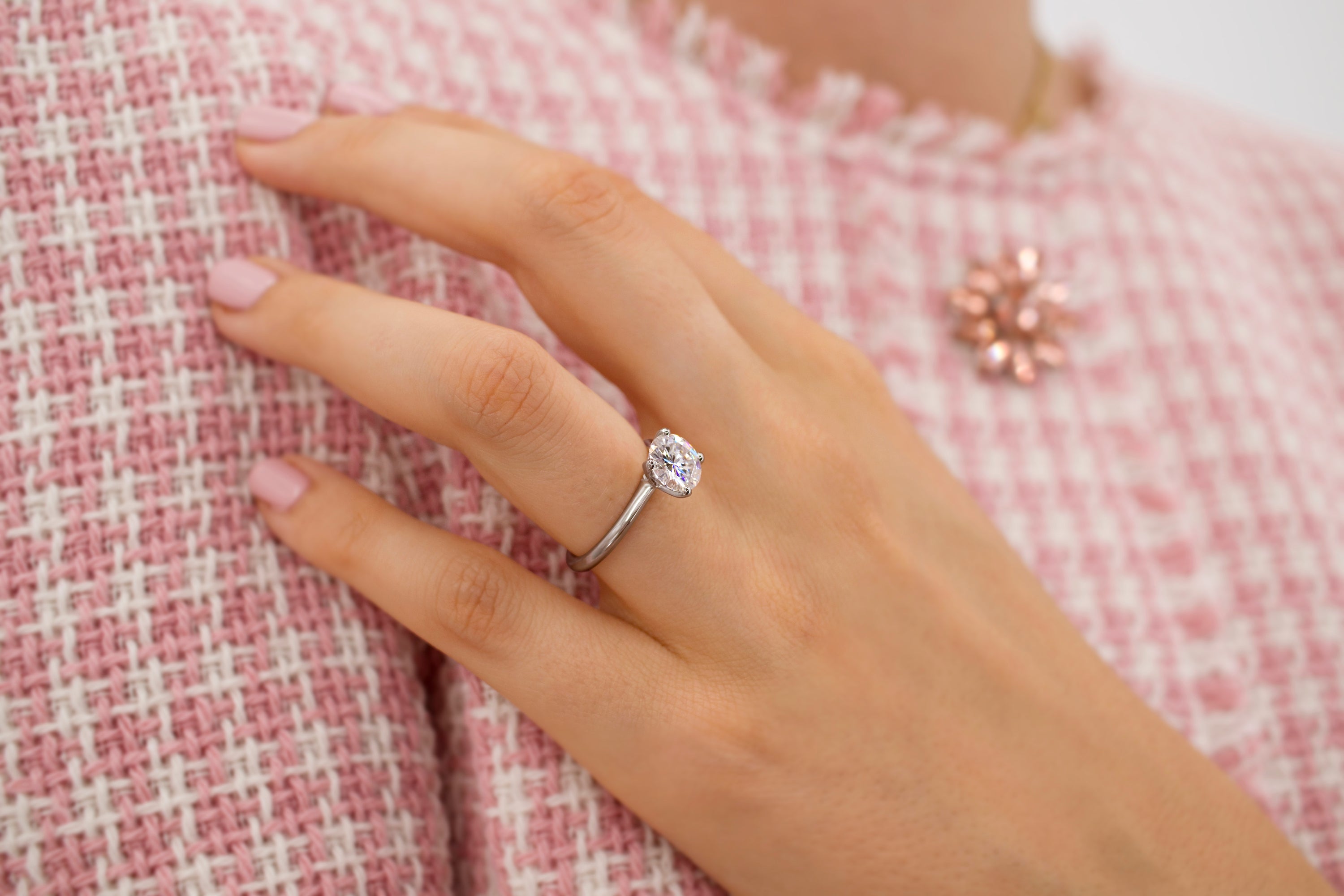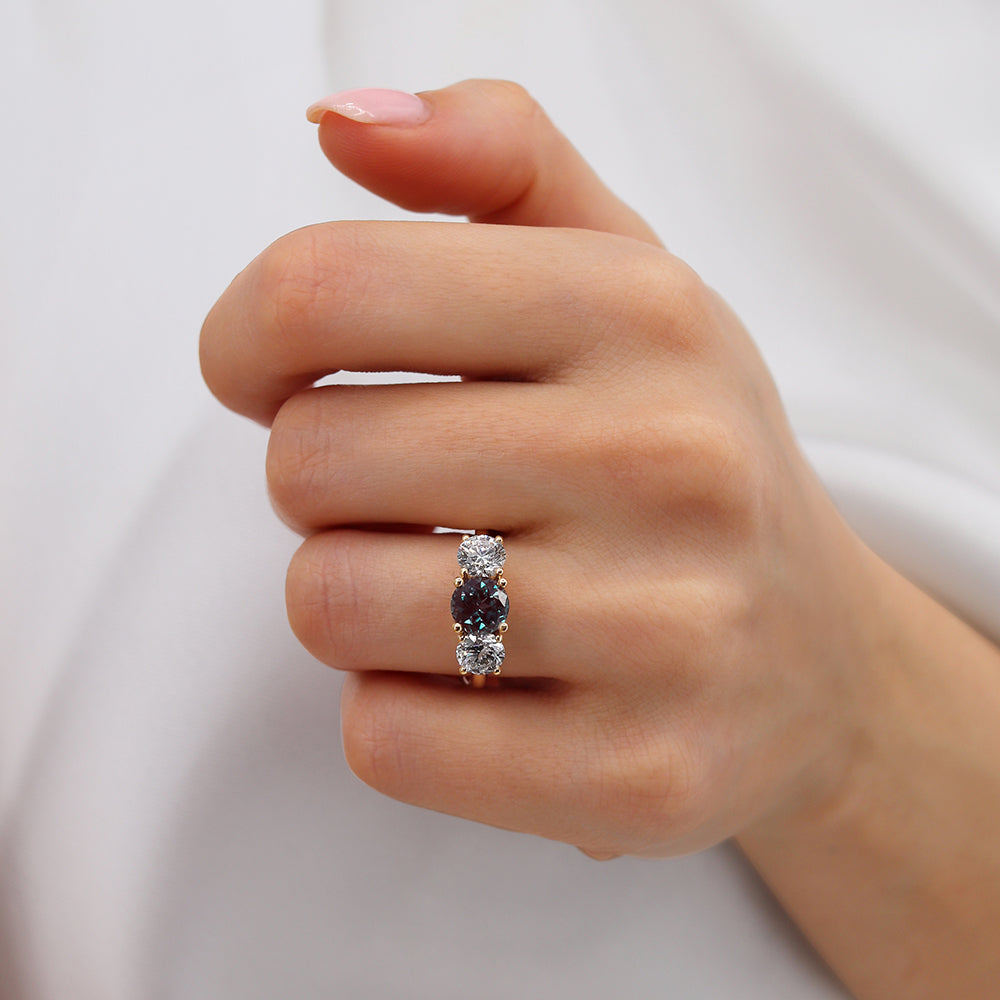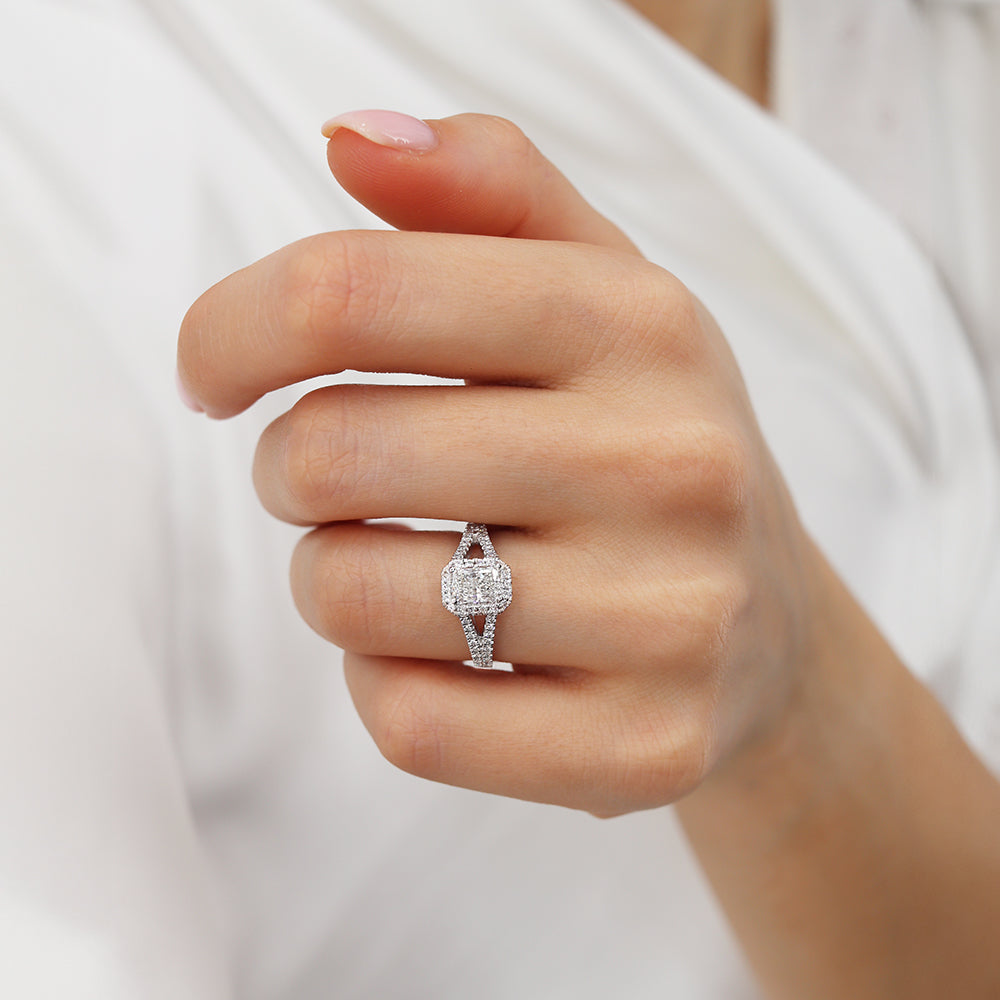How much money should you really spend on an engagement ring?
From the average engagement ring cost to the most expensive engagement rings: This article will explore how much to spend on an engagement ring and how much should an engagement ring actually cost.

The act of giving engagement rings is a long-standing tradition, an iconic symbol of love. With catchy phrases like "diamonds are a girl's best friend" boosting the popularity of diamond engagement rings, the expectation of how much money should be splurged on an engagement ring has many of us feeling a bit overwhelmed. But with the rise of new technology allowing the creation of ethical and sustainable lab-grown diamonds and gemstones, coupled with a more budget-conscious cultural mindset, you might not need to break the bank to snag that perfect engagement ring!
In this article, we'll explore what to expect when buying an engagement ring, the average price of an engagement ring, how to find the perfect budget engagement rings, and debunk some famous myths about how to spend your money!
Buying an engagement ring
Determining how much money to spend on an engagement ring can be a hot topic, but understanding pricing and typical spending habits can help you when you start your search and avoid unpleasant surprises and discussions.
So, what should you expect when buying an engagement ring? Variation. Thanks to lab-grown diamonds and gemstones, beautiful larger diamonds are more accessible. Two identical rings could have different prices by 10X depending on the carat weight of the diamond centre stone and its origin.
We get it; this doesn’t narrow down the answer much. Let's explore the "average" cost of an engagement ring.
The Average Engagement Ring Cost
Suggested by the diamond industry, the advice is to set aside about two months' worth of salary for an engagement ring—a symbol of love. However, as more people focus on being smart with money, this old rule is getting a closer look.
Traditionally, the idea was to spend two months' salary on an engagement ring, setting a financial expectation for this meaningful purchase. But times are changing. Today, conversations about personal finances are more open, and people are questioning whether this age-old advice still fits. With the cost of living on the rise, couples are reconsidering what makes sense for their wallets.
In the midst of discussions about financial responsibility, the practicality and relevance of the two-month salary guideline are being scrutinised. It's not just about following tradition; it's about finding a balance that aligns with personal values, financial goals, and the meaningful nature of the gesture. In a world where transparency about money is encouraged, the two-month salary guideline is being broken down and adapted to better suit the diverse financial situations of couples today.
Couples are now looking for engagement rings that symbolise love while also being mindful of their finances. The focus is shifting from sticking to traditional norms to embracing a more personalised and practical approach. This change represents a broader cultural shift where financial decisions are viewed as collaborative and reflective of shared values.
The advice to spend two months' salary on an engagement ring, once a steadfast tradition, is now under the microscope. As couples navigate modern life, considerations extend beyond societal expectations to include financial compatibility, shared goals, and meaningful gestures that resonate with their unique relationship dynamics.
The average wage in the UK is £2,334 per month - using the two-month salary logic that would make the average engagement ring cost £4,668. In today's market, this would probably get you a 1.00ct I colour round-cut natural diamond solitaire.

However, this same ring would cost you around 1/6th of the price if you were to pick the same spec lab-grown diamond - which will be discussed later in this article.
The most expensive engagement rings
Topping the list of the most expensive engagement rings is the Pink Star Diamond ring, a mesmerising 59.60-carat pink diamond mounted on a platinum ring. This unparalleled gem fetched a jaw-dropping $71.2 million at auction, setting a record for the most expensive diamond ever sold.

Following closely is the Blue Moon Diamond ring, a flawless 12.03-carat blue diamond set in a platinum ring surrounded by colourless diamonds. This exceptional piece of jewellery fetched a remarkable $48.5 million at auction, emphasising the allure of rare coloured diamonds in the world of high-end engagement rings.
In addition to these extraordinary diamonds, iconic engagement rings from old jewellery houses have achieved stratospheric price tags. These masterpieces often feature large, flawless diamonds with exceptional cuts, complemented by intricate and artistic designs.
Ultimately, the most expensive engagement rings transcend mere symbols of commitment, evolving into wearable works of art that encapsulate luxury, rarity, and timeless beauty. Far removed from everyday life - these pieces are investment pieces and would be lucky to even be worn.
How much should an engagement ring actually cost

Many factors come into play when costing an engagement ring, ranging from the carat weight and colour quality of the diamond to the cost of the precious metal used.
Ultimately, the answer is personal preference. If your partner prefers to keep things classic with a sleek solitaire and a round-cut diamond, you could get a beautiful option with a lab-grown diamond for under £1,000. If you and your partner want to celebrate your love with something truly unique, a bespoke ring usually costs over £3,000, with natural diamonds and gemstones costing significantly more. Something else to keep in mind is that the price of lab diamonds increases quite evenly up to 2.50ct, whereas natural diamond prices increase exponentially.
There's a noticeable change happening in the engagement ring market—the surge of lab-grown diamonds and gemstones. These synthetic alternatives offer the same visual allure as natural stones but at a much more affordable price. Lab-grown diamonds are carefully crafted in controlled environments, replicating the geological processes that create natural diamonds. Simultaneously, lab-grown gemstones, such as vibrant sapphires and rubies, emerge as ethical and stunning alternatives to their natural counterparts.
This shift isn't just a passing trend; it's a conscious decision by couples to align their values with their purchasing choices. Lab-grown diamonds, being conflict-free, address concerns related to unethical mining practices, providing a guilt-free alternative without sacrificing beauty.
The affordability of lab-grown options allows couples to explore various styles and designs without the constraints of a hefty price tag. This democratisation of choices empowers individuals to select rings that reflect their unique preferences and styles while adhering to their budget.
Furthermore, the controlled production process of lab-grown diamonds and gemstones ensures consistent quality, eliminating the uncertainties associated with natural stones. With ethical considerations gaining prominence, these alternatives offer a clear conscience to couples who seek not only a beautiful ring but also one that aligns with their values.
Because of the advent of this technology, the answer to the question of “How much should an engagement ring actually cost” is however much it costs to create a design and symbol of your love. This is because there are so many more affordable alternatives making it possible to purchase your dream ring at multiple different price points.
How much to spend on an engagement ring

In the pursuit of the perfect engagement ring, couples are now embracing affordability without sacrificing the aesthetics or profundity associated with this cherished symbol. The traditional notion of allocating two months' salary to a ring is giving way to a more individualised, practical, and financially astute approach. Lab-grown diamonds and gemstones, with their ethical and cost-effective attributes, are emerging as the favourite for couples seeking a symbol of enduring love without the encumbrance of exorbitant expenses.
The true value of an engagement ring is the seal it provides to your love story. And if you still don’t know how much to spend - think of the perfect ring, what carat weight is it - what cut and what style. This will give you a fantastic base to work from. If it doesn’t fit within your budget - try swapping the diamonds for lab-grown diamonds, explore different diamond colours or metal variants. The most important thing is to enjoy the experience of shopping for your engagement ring. Always remember that however much you can afford is the correct amount to spend, and that love isn’t measured in coins or carat weights.
